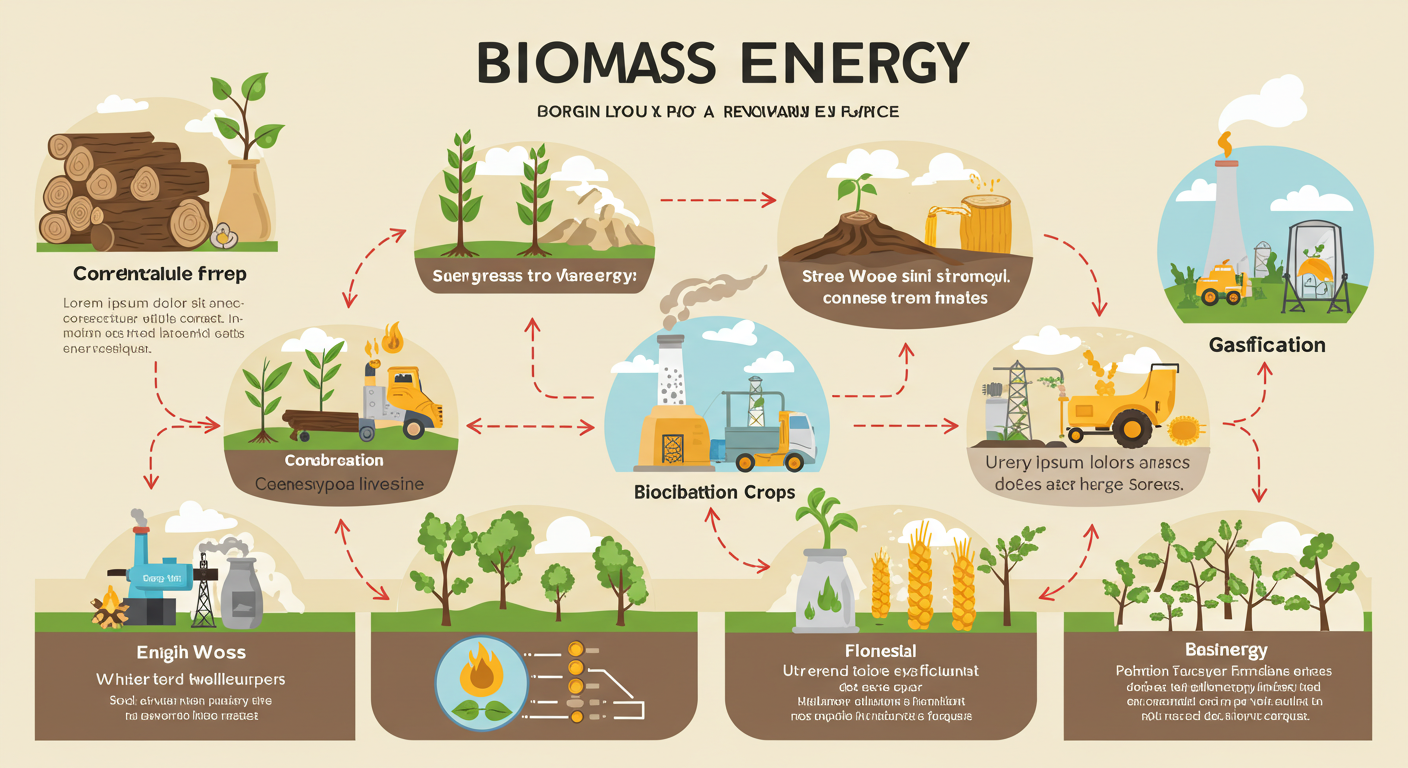Understanding Geotargeting
Geotargeting is a marketing strategy that utilizes geographic information to deliver tailor-made advertising or content to consumers based on their location. This approach allows businesses to focus on potential customers within specific areas, enabling a more personalized marketing experience. By leveraging location-based technologies and methodologies, companies can optimize their outreach and drive conversions effectively.
The process of geotargeting employs several key technologies to accurately pinpoint user locations. One of the most common methods is Global Positioning System (GPS) technology, which relies on satellite signals to determine the precise location of mobile devices. This technology is particularly effective for reaching consumers on the go, as timely and relevant messages can be sent to users’ smartphones when they are in proximity to a business or promotional event.
Another method used in geotargeting is IP address tracking. By identifying the IP addresses of users, businesses can estimate their geographic locations. Although not as precise as GPS, IP tracking can provide valuable insights into user behavior and demographics, assisting marketers in designing location-specific campaigns tailored to the interests of various regions.
Additionally, mobile data analytics plays a crucial role in geotargeting by analyzing user behavior and location data collected from smartphone applications. This data can reveal patterns and preferences of potential customers, helping businesses refine their marketing strategies. By understanding where their target audience is located and how they behave, marketers can make informed decisions on ad placement and promotions that resonate with local consumers.
In summary, geotargeting represents a powerful tool for businesses seeking to connect with customers in specific geographic areas. By employing various technologies such as GPS, IP address tracking, and mobile data analytics, companies can craft targeted marketing efforts that not only enhance customer engagement but also foster greater sales opportunities.
Benefits of Geotargeting for Local Businesses
Implementing geotargeting strategies provides numerous advantages for small and medium enterprises (SMEs) aiming to strengthen their presence in local markets. One primary benefit is the enhanced customer engagement that arises from delivering relevant content based on the user’s geographic location. By tailoring advertisements, promotions, and messages to specific local demographics, businesses can significantly increase the likelihood that potential customers will interact with their offerings.
Moreover, geotargeting has been shown to improve conversion rates drastically. When businesses are able to connect with customers who are physically close to their location, they are in a prime position to encourage foot traffic and drive sales. For instance, a promotional text message about a limited-time offer can motivate nearby customers to visit a store, translating into immediate purchases and positive customer experiences.
An additional merit of geotargeting lies in its ability to facilitate more personalized marketing efforts. By leveraging geographic data, businesses can create highly targeted campaigns that resonate with local preferences and cultural nuances. This sort of tailored approach not only enhances customer loyalty but also positions a brand as more relevant within its community, thus fostering deeper connections with local clientele.
Furthermore, utilizing geotargeting can lead to substantial returns on investment (ROI). SMEs that deploy targeted advertising are likely to see an increase in conversion rates without proportionately increasing their marketing expenditures. As a result, businesses can achieve more effective outcomes while maximizing their advertising budgets.
Lastly, the physical presence of local stores benefits immensely from geotargeting. By directing online traffic to offline locations, businesses can achieve a noticeable uptick in foot traffic. This increased visit frequency contributes directly to sales growth and reinforces the local market viability of these enterprises.
Identifying Your Target Area
Identifying the appropriate target area is a critical step in the process of geotargeting. This step involves defining the geographical boundaries within which a business aims to reach its customers effectively. To begin this process, market research becomes indispensable. By understanding the demographics and preferences of local consumers, businesses can refine their target area to ensure that marketing efforts resonate with potential customers.
One effective strategy for conducting this research is utilizing local surveys and focus groups. These methods allow businesses to gather firsthand insights regarding the preferences and purchasing behaviors of their target audience in specific neighborhoods. Furthermore, online platforms and tools such as Google Analytics can provide crucial data regarding where website visitors are located, thus guiding the identification of high-potential areas.
Additionally, analyzing demographic data plays a pivotal role in shaping your target area. Businesses can use resources like the U.S. Census Bureau or local chambers of commerce to collect data on factors such as age, income levels, and education attainment. Understanding these characteristics enables businesses to better determine the regions where their products or services would have the most appeal.
Consumer behavior analysis is equally important. By examining purchasing trends and preferences, businesses can pinpoint not just where potential customers live, but also how they prefer to shop and what influences their decisions. Local competition analysis is also paramount; assessing competitors’ presence in certain areas helps in identifying underserved markets or overly saturated ones. By employing these tools and techniques, businesses can successfully refine their target area, optimizing their geotargeting efforts to reach local customers effectively.
Creating a Geotargeting Strategy
Developing an effective geotargeting strategy is essential for businesses looking to enhance their outreach to local customers. The first step in this process is selecting the right platforms for your campaigns. Popular choices include social media, search engines, and email marketing. Each platform offers unique advantages; for instance, social media allows for precise location targeting, while search engines can ensure visibility to users searching for local services. It is critical to evaluate where your audience spends their time online, to maximize engagement and interaction with your campaigns.
Setting clear goals is another fundamental aspect of your geotargeting strategy. Goals may vary, from increasing foot traffic to a physical location, boosting online sales from local customers, or enhancing brand awareness within a specific geographical area. Establishing measurable objectives enables businesses to track the effectiveness of their geotargeting efforts. These goals should be aligned with overall business objectives to maintain focus and coherence in marketing initiatives.
Once the platforms and goals are established, determining the appropriate messaging becomes crucial. The messaging should resonate with the local audience while being relevant to their geographic context. Tailoring content to reflect local culture, events, and trends not only increases relatability but also fosters a stronger connection with the community. Additionally, consider using local language nuances or references to better engage your audience.
Integrating geotargeting with other marketing strategies can further enhance the effectiveness of your overall marketing plan. For example, aligning geotargeting with SEO efforts can improve your visibility in local search results, while combining it with promotional strategies can enhance user response to targeted offers. This cohesive approach ensures that your marketing initiatives are not only localized but also harmonized to reflect a unified brand message.
Tools and Technologies for Geotargeting
Geotargeting has become a crucial aspect for businesses aiming to reach local customers effectively. Various tools and technologies are available to assist businesses in executing their geotargeting campaigns. Among these, Google Ads and Facebook Ads are the most widely used platforms, each offering unique features suitable for different advertising needs.
Google Ads allows businesses to target users based on their geographical locations. It provides options to set geographical boundaries, including countries, regions, cities, or even radius targeting around specified locations. With a flexible bidding system, businesses can optimize their budgets according to local demand. The key benefits of using Google Ads include extensive reach and detailed analytics, enabling businesses to fine-tune their campaigns based on performance metrics.
On the other hand, Facebook Ads offers advanced demographic targeting, paired with geotargeting features. Businesses can target specific locations while also considering interests, behaviors, and other psychographic factors. This makes Facebook particularly effective for local businesses aiming to reach potential customers within a defined area. Facebook’s advertising interface provides robust analytics to help businesses gauge campaign success and make necessary adjustments.
Additionally, specialized geofencing tools have emerged, such as GroundTruth and Radar, which allow businesses to create virtual boundaries around physical locations. These tools help in delivering real-time ads when potential customers enter a defined area, thus enhancing engagement levels. Pricing models vary, with some tools operating on a subscription-based model while others offer pay-per-click options.
When selecting a geotargeting tool, businesses should consider their unique needs, budget, and target audience. The effectiveness of a geotargeting campaign depends on strategic planning and the right choice of tools tailored to specific business goals.
Collecting and Analyzing Location Data
Effective geotargeting relies heavily on the meticulous collection and analysis of location data. This data serves as the backbone for understanding customer behavior and preferences, ultimately enabling businesses to tailor their marketing strategies. One of the most common methods for collecting location data is through customer surveys. By directly engaging with the audience, businesses can gather insights regarding their customers’ geographic locations and their preferences related to products or services.
In addition to surveys, app analytics stand out as a powerful tool for geotargeting. Many companies leverage mobile applications to track user locations through GPS. Utilizing app analytics allows businesses to access real-time location data and assess how users interact with their services within specific regions. Furthermore, Customer Relationship Management (CRM) systems can provide valuable location information by integrating customer data that includes addresses and regional preferences. Analyzing this data can assist businesses in segmenting their audience based on geographical criteria, allowing for more precise marketing approaches.
There are also numerous third-party location data providers available, which can enhance a company’s geotargeting efforts. These providers offer enriched datasets that combine multiple data points, giving businesses a more comprehensive view of consumer behavior in different locations. However, while gathering and utilizing such data, it is imperative to prioritize data privacy and adhere to regulations, such as the General Data Protection Regulation (GDPR). Companies must ensure they collect location data transparently, obtaining necessary consents while protecting user privacy.
Ultimately, by effectively collecting and analyzing location data, businesses can develop deeper insights into their target market’s behavior and preferences, subsequently optimizing their marketing campaigns to engage local customers effectively.
Crafting the Right Message for Target Audiences
When it comes to reaching local customers through geotargeting, crafting the right message is essential. This involves tailoring marketing content to resonate with differing geographic segments by reflecting their unique culture, interests, and values. By developing localized content, businesses can significantly enhance their engagement and effectiveness in reaching potential customers.
Understanding the specific characteristics of different regions is crucial in creating messages that resonate. For example, language plays a pivotal role in communication. Utilizing local dialects or regional slang can make a marketing message feel more relatable and personalized. Incorporating popular phrases or references relevant to the area serves not only to establish a connection but also demonstrates an understanding of the local audience.
Imagery is another vital aspect of localization. Visual content, such as images and videos, should reflect the local landscape, lifestyle, and community events. Utilizing photographs of local landmarks or featuring residents of the area can create a sense of belonging and familiarity, subsequently fostering trust with the audience. Additionally, these visuals should align with cultural values and celebrations unique to that geographic area, further deepening the audience’s connection to the message.
Promotions tailored to specific locations also play a significant role in enticing customers. Highlighting regional aspects in special offers can spur interest. For instance, a business might promote a discount surrounding a local festival or provide incentives for residents of a particular neighborhood. These tailored promotions not only draw attention but also contribute to a greater sense of community.
By thoughtfully considering language, imagery, and promotional strategies specific to geographic segments, businesses can effectively craft messages that resonate with their local customers, fostering stronger connections and driving engagement.
Implementing Geotargeting in Advertising Campaigns
Geotargeting has emerged as a powerful tool for businesses seeking to connect with local customers by tailoring their advertising efforts based on geographical location. Implementing geotargeting in your advertising campaigns involves several practical steps that leverage various advertising platforms effectively. The first step is to choose the right advertising platform that aligns with your business goals. Platforms like Google Ads, Facebook Ads, and Instagram Ads offer robust geotargeting features that can be utilized to reach specific audiences based on their location.
Once you have selected a platform, the next step entails setting up geofences, which are virtual boundaries defined by geographical coordinates. This can be accomplished by utilizing the platform’s map interface to draw boundaries around specific areas such as neighborhoods, cities, or even stores. This is particularly beneficial for businesses with physical locations, as advertisements can be directed to users within a certain radius of your establishment, driving foot traffic and increasing engagement with local customers.
In addition to geofencing, audience targeting parameters must also be configured to maximize the impact of your ads. This includes defining the demographics, interests, and online behaviors of your localized audience. By combining geotargeting with audience segmentation, businesses can deliver personalized ads that resonate with potential customers, increasing the likelihood of conversion.
Several case studies showcase the effectiveness of geotargeting in real-world applications. For instance, a local restaurant implemented geotargeting campaigns that drove significant in-store traffic during lunch hours by targeting nearby office employees with enticing offers. Similarly, a retail chain utilized geofencing to send promotions to customers when they were within a specified distance from their stores, leading to increased sales during promotional periods.
Through these strategies, businesses can not only improve their local marketing efforts but also enhance the overall effectiveness of their advertising campaigns. Geotargeting empowers advertisers to reach their audiences with precision, ensuring that messages are relevant and timely.
Measuring the Success of Your Geotargeting Efforts
In today’s competitive market, measuring the effectiveness of geotargeting campaigns is crucial for any business aiming to reach local customers effectively. To understand the impact of these localized marketing efforts, it is essential to focus on specific key performance indicators (KPIs) that provide valuable insights into campaign performance.
Engagement rates serve as an important metric, reflecting how well your target audience interacts with your content. High engagement often indicates that your geotargeting strategies are resonating with local consumers. This can include tracking likes, shares, comments, and click-through rates on various platforms. By regularly assessing these engagement levels, businesses can identify which elements resonate most with their audience and adjust their messaging accordingly.
Another critical KPI to monitor is the conversion rate, which quantifies the percentage of users who take a desired action, such as making a purchase or signing up for a newsletter. Analyzing conversion rates allows businesses to evaluate the effectiveness of their geotargeting campaigns, ensuring that the messaging and offers align with local customer preferences. A lower conversion rate may signal the need to refine targeting parameters, creatives, or even the promotional offers used.
Return on ad spend (ROAS) is another important metric that highlights the profitability of geotargeting initiatives. By calculating the revenue generated from each dollar spent on advertising, businesses can assess the financial impact of their campaigns. This evaluation can guide future budget allocations and campaign planning, ensuring resources are directed toward the most effective strategies.
Utilizing tools such as Google Analytics and social media insights can help gather and analyze performance data. These tools can provide a comprehensive view of campaign performance, allowing businesses to iterate on their geotargeting strategies based on concrete data. By continuously refining these efforts, businesses can better engage local customers and improve overall campaign effectiveness.





